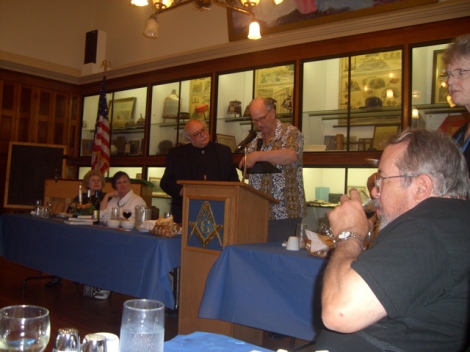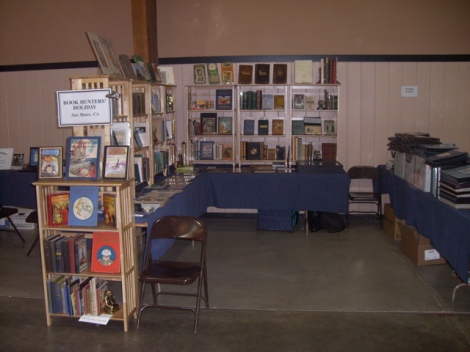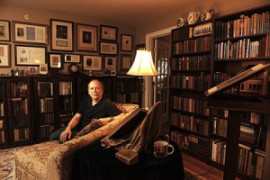The names of the majority of these writers will forever remain a mystery but there are a handful whose identities have been confirmed:
HENRY MILLER (1891-1980) fled Paris for New York in 1940 at the start of WWII. He arrived in New York penniless. Legman, who knew Miller but didn't like him, was in the process of working with Miller and NY publisher-bookseller Jack Brussel on the first American edition of Tropic of Cancer (the "Medusa" edition). Legman approached Miller about writing for Johnson and set up an appointment to meet at Frances Steloff's Gotham Book Mart. Miller didn't show; he sent Anais Nin to work out the details with Legman, who wound up recruiting her to write for Johnson as well.
Miller's contributions have been identified by Legman as the roots for Miller's Sexus, Nexus, and Plexus (The Rosy Crucifixion) and as his Opus Pistorum (1941).
ANAIS NIN (1903-1977) fled France to New York with Henry Miller as WWII began. She, too, was broke and needed cash, fast.
"I gather poets around me and we all write beautiful erotica. As we have to suppress poetry, lyrical flight, and are condemned to focus only on sensuality, we have violent explosions of poetry. Writing erotica becomes a road to sainthood rather than to debauchery...We have to cut out the poetry, and are haunted by the marvelous tales we cannot tell. WE have sat around, imagined this old man, talked of how much we hate him, because he will not allow us to make a fusion of sexuality with feeling, sensuality and emotion, and lyrical flights which intensify eroticism." (1).
Later, completely fed up and unable to continue, she wrote a letter to Johnson, who she didn't know by name and had no way to send the letter to him:
"Dear Collector;
We hate you. Sex loses all its its power and magic when it becomes explicit, mechanical, overdone, when it becomes a mechanistic obsession. It becomes a bore. You have taught us more than anyone I know how wrong it is not to mix it with emotion, hunger, desire, lust, whims, caprices, personal ties, deeper relationships, which change its colour, flavour, rhythms, intensities...You are shrinking your world of sensations. You are withering it, starving it, draining its blood..." (2)
She goes on in the same vein. Had Johnson actually received this letter his eponymous appendage would have fallen off from shame.
In the late 1960s, Ray Locke, an editor at Holloway House, a pulp porn publisher in Los Angeles, walked into Bennett & Marshall, the rare book shop at 8214 Melrose Avenue, to scout for material to reprint (3). He was shown a few erotic manuscripts that had been written sub-rosa over twenty-five years prior. He looked them over; the writing seemed familiar to him. The manuscripts appeared to have been written by his friend and Hollywood Hills neighbor, Anais Nin. Locke contacted her, they got together, she examined the manuscripts and confirmed that they were hers. Ray eagerly offered to publish them at Holloway House. Understanding that there was a new, open market for this old, clandestine work of hers, she politely declined Ray's offer, reworked the material (she'd been admonished by Johnson to stick to direct, explicit narrative, "less poetry;" she put the poetry back in) and in 1977, the year of her death, Delta of Venus, the first of her two volumes of erotica, was published by mainstream publisher Harcourt Brace Jovanovich..
CARESSE CROSBY (1892-1970), poet and widow of poet Harry Crosby, had been, with her husband, one of the lights of Paris during the 1920s. Deeply immersed in Paris's literary and art scene and social circuit, the two established Black Sun Press, one of the fine small publishers of its time, noted for the artistry of its productions. She remained in Paris after his suicide in 1929 but returned to New York during the 1930s, remarried and divorced. Her memoir, The Passionate Years (1953), remains one of the best views of American ex-pats in Paris during the 1920s.
On November 3, 1914, the U.S. Patent Office issued a patent to Caresse Crosby under her maiden name, Mary P. Jacob, for the 'Backless Brassiere', the first modern bra design. Whalebone futures presumably nosedived.
ROBERT CAMPBELL BRAGG aka N.R. De Mexico (1918-1954) lived in Greenwich Village, a bohemian in the literary and art scene. He was known to his friends as "Bob De Mexico" and wrote under that pseudonym or as N.R. De Mexico. According to his son, Kim, "the pen name N.R. de Mexico means 'N' for nee (born), 'R' for Robert of Mexico. I think the Mexico was a gag because at one point he had taught himself to speak Spanish well enough for him to translate for some additional income. During the war he worked for military intelligence. In the years just after WWII he was an editor for an architectural magazine, and only began writing novels [openly published ones!] after that period" (4).
BOOKS: Madman on a Drum (1944), a noir suspense thriller; Color TV, Now or Later?: A Comparative Survey and Analysis of the Several Color Systems and Their Impact on the Industry (1950); Marijuana Girl (1951); Designs (1951), a book about crime, gambling, prostitution; Private Chauffeur (1952), an aviation thriller.
BERNARD WOLFE (1915-1985), dramatist, television writer, and novelist graduated from Yale and after service in WWII worked briefly as secretary and bodyguard to Leon Trotsky during the revolutionary's exile in Mexico (he was off-duty at the time Trotsky got plugged) before settling in New York to become a writer. He co-wrote Really the Blues (1946), the memoir of Mezz Mezzrow, a book that would have an enormous impact upon the Beats. His 1972 autobiography, Memoirs of a Not Altogether Shy Pornographer, is a fine read and provides amusing details to his work for the unseen, unknown Johnson.
ROBERT DUNCAN (1919-1988). Space precludes full note of Duncan, whose influence on modern American poetry cannot be under estimated. Just click on the hyperlink to learn about him, if you are not already familiar with the poet and his work. His early, mimeographed journals, Epitaph and Experimental Review were influential when originally published and remain so today.
GEORGE BARKER (1913-1991). The acclaimed British poet left London at the onset of war in 1939 and settled in New York. An impecunious party animal, he desperately needed money and joined the group of secret pornsters at Nin's invitation. "He drank away the money he earned in this way" (5). He returned to the U.K. in 1943. Barker's novel, The Dead Seagull (1950), described his affair with novelist Elizabeth Smart, whose novel By Grand Central Station I Sat Down and Wept (1945) was also about the affair. His Collected Poems were edited by Robert Fraser and published in 1987 by Faber and Faber.
VIRGINIA ADMIRAL (1915-2000) was a painter who studied with Hans Hoffman and writer who worked with poet Robert Duncan to launch Epitaph, which developed into The Experimental Review. She later wrote for True Crime magazine. In 1942 she married painter Robert De Niro and a year later their son, the actor Robert De Niro, was born. Her work can be found in the permanent collections of MOMA, the Metropolitan Museum of Art and the Peggy Guggenheim Collection in Venice.
ROBERT DE NIRO, SR. (1922-1993) was an abstract expressionist painter who studied with Hans Hoffman at the artist's Provincetown, MA studio where he met his future wife, Virginia Admiral. The couple were at the center of the Greenwich Village art and literary scene, with Henry Miller, Anais Nin, young Tennessee Williams, and poet Robert Duncan (with whom De Niro, Sr. would have an affair) as friends and boon companions. His son, the actor Robert De Niro, is protective of his father's legacy.
JAMES COONEY founded and edited the late 1930s dissident art journal, The Phoenix, with his wife, Blanche in 1938 at an artist's commune in Woodstock, New York. Henry Miller, Anais Nin and Robert Duncan were contributors.
HARVEY BREIT (1909-1968), poet, playwright, essayist, critic and interviewer, was a reviewer for the New York Times Book Review from 1940-1965. He presumably wrote for Johnson prior to landing the job with the Times, no doubt invited by Nin to supplement his meager if not non-existent income from poetry. He co-wrote with Budd Schulberg the play The Disenchanted (1950) and in 1956 issued The Writer Observed.
JACK HANLEY (1905-1963), a novelist and television writer of no special talent, specialized in racy material:
Let's Make Mary : Being a Gentleman's Guide to Scientific Seduction in Eight Easy Lessons (1937); Exposing the Marijuana Drug Evil in Swing Bands (Radio Stars magazine, July 1938); Star Lust (1949); The Guy From Coney Island (1954); Bed For Beginners (1958); Strip Street (1954, under the pseudonym Gene Harvey); Tomcat in Tights (1959); Very Private Secretary (1960).
I think it safe to say that Hanley was not part of the Nin group.
ROBERT SEWALL. Not much is known about Sewall beyond that he was a childhood friend of G. Legman's in Scranton, Pennsylvania. Legman recruited him to write erotica for Johnson when he found it impossible to continue to churn out his own contributions to Johnson's cause, which were continuations of An Oxford Thesis on Love by "L. Erectus Mentulus," written for Johnson by Lupton Wilkinson. Sewall, "very talented at pastiche" (Legman) did a few of the Oxford sequels, then branched out into parodies of Henry Miller, then began a related series of Dashiell Hammett-like erotic murder-mysteries. These would later be collected and clandestinely issued as The Devil's Advocate (1942) by "Wood C. Lamont," his jab at fellow secret porn writer, the American poet and literateur, Clement Wood, known primarily for his still-in-print The Rhyming Dictionary (1936).
In one of the ironies that erotic literature is rife with, after he retired from writing, Sewall, according to Legman's widow, Judith (6), moved to Brattleboro, Vermont and became the town's postmaster, a job that would have earlier required that he arrest himself for sending obscene material through the mails.
GENE FOWLER (1890--1960). The highly regarded journalist, dramatist, and screenwriter was at one time the highest paid scribe in Hollywood. He began as a popular journalist in New York, and moved to Los Angeles in the very early 1930s. He was notorious for being in and out of the money on a regular basis and likely wrote erotica strictly for fast cash. But Fowler, one of the great wits of the day, couldn't write "straight" sex. His two contributions to American erotica are the uproariously funny clandestine masterpieces, The Demi-Wang by Peter Long (1931) and Nirvana, Or The Adventures of Miss Aveh Koosie by Dr. Desernet (1934), the former a farce in which a young man born with obvious shortcomings undergoes transplant surgery but the surgeon shows up drunk and when our hero awakens he has a horse rather than human virile member that causes him hardship; be careful what you wish for.
I have personally examined these two books in their first printed and bound editions, put together, apparently, after Fowler had delivered the manuscripts. They are printed in attractive letterpress on laid paper. Fowler was part of the writers' crowd that hung out at Stanley Rose's bookshop to bullshit - and appreciate the scenery that Rose would routinely have on display after-hours in the back room. I suspect that Rose originally acted on Johnson's behalf with the commissions but that Fowler took his carbon copies over to Jake Zeitlin, who had them printed and bound (by one of L.A.'s better printer-publishers, yet unknown. But a strong possibility is that the printer and binder was Saul Marks, who had moved to L.A. in 1930 and whom Zeitlin had taken to and given his first work in L.A. as a struggling printer before founding, with his wife, Lillian, Plantin Press), then distributed them, with faux location on the title pages, New York.
LUPTON WILKINSON (1902-1993). Wilkinson began writing articles, poems and stories for magazines, then sensationalistic fare for the pulps. In the early 1930s he became head of publicity for The Hays Office, Hollywood's self-censorship bureau and, in 1938, wrote for Johnson the classic erotic novel, An Oxford Thesis on Love. Irony doesn't get any more ironic. After leaving the Hays Office, Wilkinson became a writer for movie fan magazines and press agent.
ANTHONY GUDAITIS aka Anton Gud, aka Tony Gud wrote anonymously or under pseudonym many works for Samuel Roth, America's most prosecuted publisher of erotica. Lady Chatterley's Husbands (1931) is firmly attributed to him. Under his own name he wrote Young Man About to Committ Suicide (NY: William Faro [Sam Roth], 1934). As "Anton Gud" he compiled and edited the volume Don't Vote 'Til You Read This! (1952).
CLIFTON CUTHBERTSON. We have a name. That's it. The Social Security Death Index doesn't even have that. Who was this guy?
PAUL HUGO LITTLE.(1915-1987). The man of a 1000 pseudonyms was born Paul Hugo Litwinsky in Chicago to wealthy merchants. Little ultimately became one of America's most prolific writers with over 700 novels and books to his credit. They are almost all porn of the poorest literary quality. A chess expert, he has a few chess instructionals to his name, and wrote a book in 1965 titled The Procurers, a title about one of Chicago's most notorious call-girls who had her phones unilaterally turned off by the sheriff of Cook County. Some believe this book is fiction. It is not. My uncle, Elmer Gertz, in his day one of the U.S.'s most celebrated civil liberties and First Amendment attorneys (he won Tropic of Cancer's first case in the U.S.), was this woman's advocate in her suit against the sheriff and, natch, got her off hook and back on the phone. I once possessed a copy of this book that Little had inscribed to my uncle. I sold it ten years ago. It is now online and selling for $150. Geez...
One day someone will write at length about this character, known primarily for his porn work under the pseudonym, "A. Grandamour," who, according to my uncle (who knew him well), was a spoiled rich Jewish kid, well-educated, who turned his back on his family and background, was thrown out of the Chicago branch of The Standard Club, the social organization for successful Jews, for conduct unbecoming, married an Episcopalian, converted to Christianity, and then churned out so much crude erotica that he surely could not have had time to perform his connubial responsibilities.
CLEMENT WOOD (1988-1950). The poet, critic and litterateur wrote Flesh (1930) Lady Chatterley's Friends (1932), amongst many such novels he cranked out for Sam Roth. He was wealthy and didn't need the money; he just loved writing about sex. He must have leapt at the opportunity to write for Johnson. His The Rhyming Dictionary (1936) has never been out of print.
Of the Los Angeles contingent Legman wrote, "I was told that many Hollywood writers had written for this combine" (7). Stanley Rose's book shop was the local hang-out for screenwriters and novelists, famous and otherwise (a lot of otherwise); Rose was notorious for the back room activities of his shop, and there was no shortage of Hollywood scriveners in need of scratch and not particular about how they earned it.
So boring was writing for Johnson that the Greenwich Village division of Johnson's libido wrote much of their output round-robin style. "I am," Anais Nin wrote, "the madam of this literary, snobbish house of prostitution-writing, from which vulgarity was excluded...I supply the paper and carbon, I deliver the manuscripts anonymously, I protect everyone's anonymity" (8).
Almost everyone.
In 1953, Roy M. Johnson was elected to the Oklahoma Hall of Fame. A one-man New Deal WPA, he is still awaiting recognition by PEN for his employment services to starving writers during the Depression.
_________
1. Nin, Anais. Diaries, Volume III, p. 157.
2. ibid., pp. 177-178).
3. Interview with the author, September, 2000.
4. Tucker, Fender. Who Is N.R. De Mexico? Paperback Parade #69, Jan. 2008, pp 95-96.
5. Legman, G. Introduction to the Private Case, p. 57.
6. Email to the author.
7. Legman, G. Introduction to The Private Case, p. 53.
8. Nin, op cit, p. 151.
Aside from Legman's Introduction to Patrick J. Kearney's The Private Case, and Jay A. Gertzman's key Bookleggers and Smuthounds (1999), the Introduction by C.J. Scheiner to White Stains (Delectus, 1995) has been helpful, though Scheiner's speculation that Nin and/or members of her group wrote the erotic stories within this tome (first appearing c. 1940) is not well-developed, based entirely upon the coincidence that the stories in White Stains are also well written, and fails to provide any sort of textual comparison to known erotica by Nin or her writing in general to support his notion.








